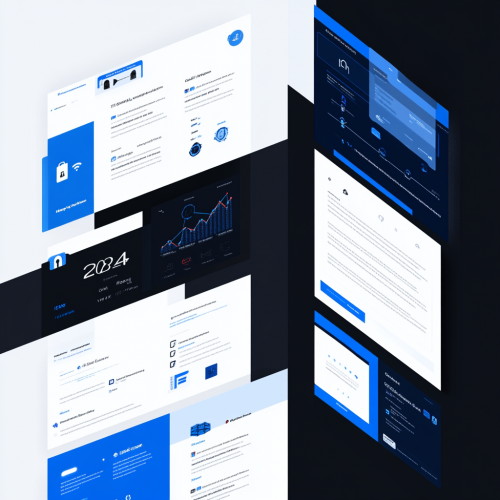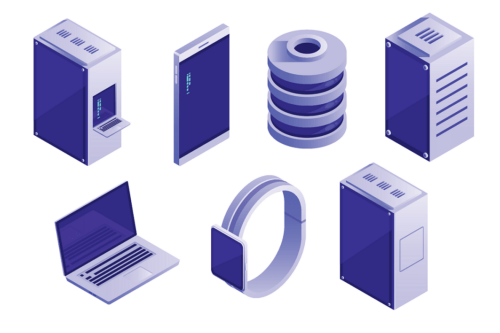It’s no secret: absolute majority of businesses tries to get maximum possible output from their products or services. IT is no exclusion, so there is an amusing yet confusing consequence: each service provider claims its offers to be the most comprehensive and outstanding. Well, it might be true regarding the most unique, fully “handcrafted” solutions. But even for the offers as widespread as, say, IaaS – there are non-stop attempts to persuade: one’s particular service is better than the rest, with checklists, considerations, bells and whistles. While the question remains and only gets sharper: what is the best choice among the whole lot of seemingly alike offers?
Let’s approach IaaS from somewhat different angle, setting technicalities aside for now. For a customer IaaS can be defined in several non-contradictory ways. The most flexible cloud model. The least restraining one. If (the entire project) analyzed and executed well – eases your expenses and spares your time. In the essence it is a customer’s sandbox attainable with no hassle: simply order your scoop’n’bucket and cook whatever you fancy. (Frankly, we use child lore only to demonstrate how easy the service is to obtain and to use; we are well aware it’s much more like a sand sculptor studio, with chisels and brushes – and breathtaking masterpieces on display).
For a provider – not about just any particular offer, but for cloud business in general – we consider no headache operations as one of the cornerstones. It is a simplification, of course, but essentially it all goes down to one-time investment – then mostly maintenance and customer support/interaction. With additional purchases a provider can expand its capabilities, upgrade existing and introduce new services.
Yet, with this humanized approach we are still quite far from any selective decisions. So, with “far” for the key term, let’s do the geography.
Worldwide VS local companies
Four global hyperscalers appear surprisingly different from each other. None started as a cloud business – they were marketplaces or software companies at first; cloud subdivisions were founded by 2006 the earliest. Hyperscalers’ business models become more and more alike with the flow of time, but even today they (and, respectively, the ways the companies build their offers) are not the same. For example, AWS places higher emphasis on agile infrastructure services, while Microsoft Azure accents different performance classes. Let’s examine some distinctive features of IaaS solutions hyperscalers provide.
Flexibility
In operational sense it is the must that grants an access of every participant to all necessary components: computing power, hardware and software, management tools, etc. In sense of maintenance it could become a performance-lowering drawback, if a provider fails to keep the cloud components up-to-date.
Scalability
Dimensional changes can affect any business, as there are seasonal peaks and dips, as well as market-related fluctuations of supply and demand, together with variations in purchasing power. Sound IaaS solution should be easily scalable, while the lack of scalability features is directly (negatively) associated with business performance and cloud services cost.
Savings
Obviously, any cloud solution is a real saver, since much less equipment is necessary to be kept on premises. It is also true in regards to time saved, but not as much particularly for IaaS, because the IT personnel of a client has to be additionally trained to manage the cloud infrastructure. On the other hand, with savings of all kinds in mind, IaaS model is the definite choice for startups.
Security
Hyperscalers provide not more than an adequate level of data protection, since “The Big Four” are unable to offer private clouds. Safe conditions of sensitive data are absolutely critical for business performance. The threat is complex due to its multi-faceted nature: required level of data protection may vary greatly; breach can occur with the negligence of a provider or neighbors in a public cloud, or because of a hacking attack or system vulnerability, or by nonchalance or a malicious intent of a client (a client’s employee). Even if specific data within a compromised system remained intact, the overall business operations will very likely be affected.
Availability
Modern day require cloud services to be up above 99.9% of time. Hyperscalers have a luxury of data centers spread, in most cases with data backup in different physical locations – so when certain stacks experience downtime, the overall access to the cloud content remains uninterrupted. The presence of skilled technical support, preferably the proactive one, is another side of the same coin.
One more confession/disclaimer. Very few cloud providers other than hyperscalers can be truly called “local companies”, since the majority of such entities is represented in several countries and often on more than one continent.
One key difference of “local” solutions was already mentioned: unlike hyperscalers, these providers can offer private clouds. Such structure is much more secure than any other cloud; for institutes like healthcare, law enforcement (together with certain government agencies) or finances IaaS from a private cloud is frequently the only option – due to the highest sensitivity of data such entities store and operate.
Latency issue
At first sight it looks weird: electric signals, including those responsible for data transmission, are travelling with the speed of light. So “whadda heck late’n’zy ya talkin’bout”?
It does take time for data to travel to a cloud and back. In most cases the latency goes unnoticed because it’s no matter: you may receive a message a second later; even in time-sensitive financial transactions a small caesura is acceptable. But when it comes to non-human communication, particularly with the exploding Internet of Things – latency in machine talks becomes literally the issue of life and death. Thinks unmanned and/or remote control transportation first of all: even a second of lag can cause wreck and chaos. Next come… gamers, surprisingly. Actually, anything virtual that suggests real time interaction is prone to latency.
As a cloud infrastructure is managed thru virtual machines, so it turns out logical (but still quite strange) to place virtual servers as close to end users as possible. Usually it is achievable with “local” cloud providers.
The Checklist
- Does the provider offer an array of choices? Is there option that fully fits your current needs? Does this solution have enough flexibility as to grow together with your business?
- Is the offer of your choice adequately priced?
- Is it the same entity that owns and operates the cloud? Is your access to the services direct and clear?
- How secure is the solution, considering all aspects: access to data; location, access and technical features of the data center; compliance with applicable regulations; cloud type; etc.?
- Does the provider include management tools to the offer?
- Is there 24/7 technical support? How is it rated?
Worldwide PLUS local companies, a.k.a. Managed Services
There is the way to unite rich clouds of world brands with almost family-like care of local providers. Or, in less sentimental wording: to enjoy the benefits of a hyperscalers’ cloud with no requirement to maintain it. A local service provider brings you a hyperscalers’ cloud and takes all responsibility chores – leaving you with just what you are intended to do in the cloud. Such model is called “managed service” – and, respectively, such provider is labeled “managed services provider”.

 Previous article
Previous article


